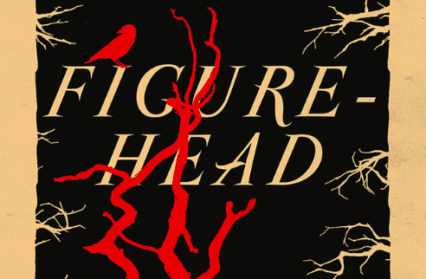Isobel Roach reviews Figurehead by Carly Holmes, a debut collection of short stories which scrutinise the strange and playful through a range of different literary forms.
An uncanny weirdness pervades Carly Holmes’ debut short story collection, Figurehead. These twenty-six bizarre and chilling tales might fit under the umbrella term of ‘strange fiction’ with their concern for nameless monsters lurking in the peripheries, startling acts of metamorphosis, and a penchant for reinventing fairy tales – but Holmes’ stories are chimaera-like creatures themselves. Drawing on a rich tradition of horror writing, Figurehead is a collection that navigates the differing modes of the genre. Holmes proves herself a master of the macabre, uniting the gothic with body horror, ghost stories, and suspenseful thrillers – all with an interminable undercurrent of weirdness that keeps the reader on the edge of their seat. The short story proves an excellent medium through which to explore the strange and uncanny; Holmes exploits the unique ability of short fiction to embrace ambiguity and revel in what is unsaid and unexplained. It is in these moments of uncertainty, these split seconds of self doubt, that the eerie tales in Figurehead truly come to life.
Women are the beating heart of Holmes’ short fiction. Figurehead is, primarily, an interrogation of womanhood through the lens of the gothic and weird, and its portrayal of femininity is closely linked to nature, wildness, and a kind of magic that’s rooted in the earth. This idea is often made literal in an array of short stories that see women transforming from human to animal – or even tree. The women of Figurehead live dual lives, trapped between the controlling domestic sphere and the savage wilderness of the outside world. More often than not, the temptation of stepping out of one’s own body and choosing an animal life is too great to resist; ‘with every passing day’ the women of Holmes’ stories ‘remember less about walking on two legs’. We as readers, however, are distinctly aware of their human bodies.
Female nudity is a common theme in Figurehead, and seems to be a necessary part of the transformative process for Holmes’ women – whether the change is physical or spiritual. Bodies proliferate the pages of Figurehead in varying degrees of nakedness, charged with a potent sexual energy that powers the entire collection. ‘There was nothing else to do but take my clothes off and use my body to smooth in the topcoat of polish’, remarks one heroine; another wishes ‘for a blanket to cloak the gleam of [her] naked back and legs’ as she prepares to offer herself up to a monster that lurks in shadow; a third returns home after a night spent living as an animal, ‘one naked limb at a time’. These women act on unconventional sexual desires in defiance of their societal roles – and Holmes achieves this through an intense focus on the naked, wild, female body. The connotations of female nakedness can at times be troubling and suggest a form of gratuitous exploitation, despite the author’s best intentions. After a time, a reader comes to anticipate this depiction of nudity and sexuality, and the stories suffer from a lack of suspense and shock factor, but Holmes’ prosaic talent is not to be questioned.
Just as central to the narratives in Figurehead is bodily violence. One of many facets of the horror genre, body horror features in several key stories throughout the collection, and Holmes does not shy away from depicting these moments in all their gruesome, bloody glory. Teeth are pulled, women are operated on without their consent, and fingers are cut off and reattached. Whilst some of these stories are too bleak and disturbing to read, others find that sweet spot between disgust and grim fascination that keeps a reader’s eyes fixed on the page. Holmes is at her best, however, as a writer of ghost stories. This can be seen in the aptly titled tale, ‘Ghost Story’; a brief but chilling tale of a haunted house enthusiast who gets more than he bargained for. ‘Three for a Girl’, a novella-length story at the very centre of the collection is a standout piece with perfect pacing and an excellent, immersive setting. Here, the repressed are manifestations of a fractured familial bond; this longing for motherhood, sisterhood, and the kind of blood ties that transcend life itself is a recurring theme in Figurehead. At its most haunting, the relationship between mother and child is balanced on the edge of a knife, threatening at any moment to fall into darkness, as in the particularly well-crafted story ‘Sleep’. But despite their potential for horror and suffering, these parent/child bonds are resilient and visceral; Holmes distinguishes herself as an author uniquely in touch with the emotional wants and needs of her characters. Through beautiful, rhythmic prose Figurehead weaves a sequence of stories that are strange, captivating, and unforgettable.
Figurehead by Carly Holmes is available via Parthian.












